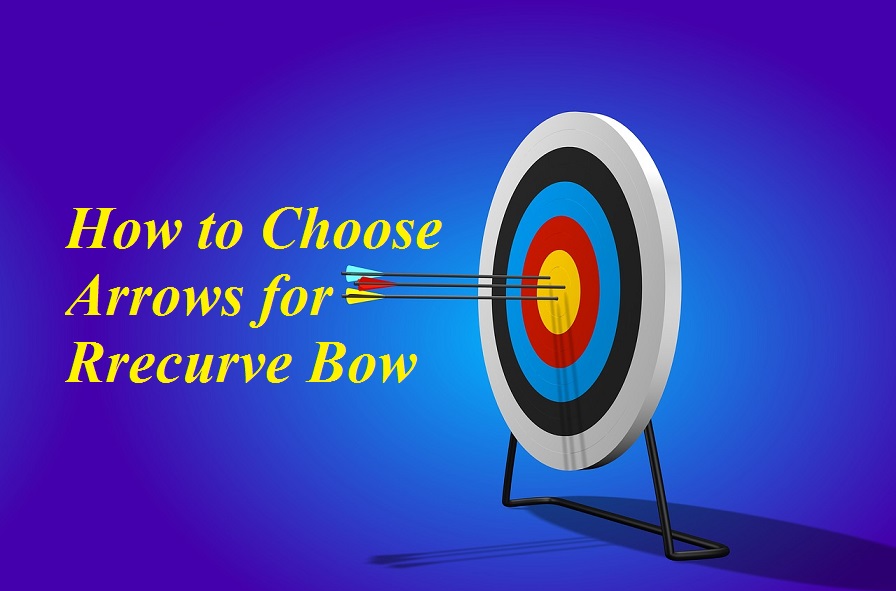What Is A Recurve Bow?
Recurve bow is a sort of bow which consists of several limbs. Although the bow is unstrung, these limbs stay against the archer. This type of bow is the most desired kind of bow in the ongoing term since it can store a broad chunk of energy as well as circulate the energy productively all over the overall parts of the bow. Due to this exceptional element, this bow gives a huge quantity of energy to the arrow, consequently enlarge its speed.
The limbs of this type of bow are of a reflex outline which assists in expanding the speed of arrows so that they can travel with bigger velocity. With the inclusion of a huge rise, you won’t feel any sort of vibration while holding this stable sort of bow. These bows can shoot at the exact similar spot where you have aimed at since they are usually pointed towards the center which results in highly precise outcome.
How to Choose Arrows for a Recurve Bow
Discovering new arrows can feel like an overwhelming challenge with so many divergent options available to traditional archers. Depending upon your requires there are a few ways to narrow down your arrow options. The elementary steps for choosing an arrow are giving below:
Firstly, choose your arrow material carefully. Arrow material includes Wood, Carbon, Aluminum, or Fiberglass. Each of these has different benefits and drawbacks which are discussed below.
Secondly, choose the arrow spine and arrow length. Arrow spine and arrow length will be based on the bow from which the arrow is being shot. You will also need to regulate your draw length and the pull weight of your bow at your draw length, not what is marked on the side of the bow as your draw length may be different.
Thirdly, choose your desired shaft pattern. The most habitual carbon arrow shaft patterns are black, camo, and wood grain. Aluminum arrow shafts have the same options for the most part. For wood arrow shafts have many varieties stain colors and accent colors like a crown dip and/or cresting.
Different Kinds of Arrows Are Made from Different Materials
Wood
The native arrow! This kind of arrows are very cost-effective, which makes them considerable for new archers, but they don’t last too long. They break, warp, and splinter, and because they’re made from organic material, they’re not steady—meaning, the differences from an arrow to arrow are great, and you’ll find that each arrow flies differently. Wood arrows are usually favored with traditional archers and people who like to shoot longbows, but they’re almost never used in competitions.
Aluminum
These are tremendous for beginners, but they’re also used by more experienced archers. Generally, they cost more than wooden arrows, but they’re usually low-priced than carbon arrows. Aluminum arrows come in a wide range of sizes which can be used for target archery and hunting. Consistently, they use screw-in tips, so you can switch between bullet points, field points, and broad heads. They can also be fletched with feathers or plastic vanes. They’re a little powerful than carbon arrows, which makes them a great choice for target archery, where arrows are often shot in groups and can knock against each other.
Carbon
These type of arrows are very stiff, which is a perfect match for heavier bows—particularly, heavier compound bows used for hunting. And, because carbon arrows can be constructed to be very thin, they penetrate game better than thicker aluminum arrows—another plus for hunters. The do splinter from time to time, and when that happens, they need to be tossed. Carbon arrows can get very expensive.
Aluminum/Carbon Mixes
These arrows are commonly manufactured to have an aluminum center with carbon surrounding the aluminum. These have all the same edge of carbon arrows, and they’re great for archers who are shooting outdoors at far-away targets. They’re light, stiff, they perform well in wind, and they don’t need large fletchings. These are desired with competitive archers, and often Olympic archers use hybrid arrows. Last but not least, this type of arrows are costly.
CALCULATE YOUR DRAW LENGTH
The first thing one needs to know to before select arrows are draw length. There are two methods one can use to figure out their draw length, even without a bow in hand.
The first technique is the arm-span method. Stand straight up, and stretch your arms out to either side. Make sure both of your arms are parallel to the floor and your shoulders aren’t pulled together. Then, have someone to measure the distance between both of your middle fingertips with a measuring tape. Take that distance, divide it by 2.5, and you get your accurate draw length. For example, if your arm span is 70”, then the most perfect draw length for you is 28”.
The second way is the wall measurement. To calculate your draw length in this way, just face a wall sideways and place the fist of your bow arm firmly against the wall while keeping your arms parallel to the floor. Then, turn your head so you’re facing the wall. Imagine you’re holding a bow because this position should look as if you were holding an imaginary bow and aiming at the wall. Once you’re in position, have a person measure the distance between the wall and the corner of your mouth. This will be your draw length.
To get the most accurate calculation, use both of these methods. In the unexpected event that the numbers don’t match, add the two together and then divide the result by 2 to get your draw length.
HOW LONG SHOULD MY ARROWS BE?
Now that you find your draw length, add 1 or 2 inches to get the best arrow length for you. Most of the people have a draw length of around 28”, so arrows between 29 and 30 inches long are perfect for them.
HOW HEAVY SHOULD MY ARROWS BE?
For hunting purposes, your arrow requires to drive its way through fur, skin, flesh, and sometimes bone to make a kill shot. Whether your shot can do this depends on the kinetic energy as well as the type of arrowhead you use. The heavier an arrow is, the more kinetic energy it will have when it strikes the target.
On the other hand, target arrows only need to go through a few layers of cardboard or compressed foam, which doesn’t need nearly as much kinetic energy as the hide and bone of a whitetail deer. For target practice, one should stick with lighter arrows.
Finally, finding the right arrows can make a big difference in your shooting. Be sure to take the time to find the perfect arrow for your needs.

